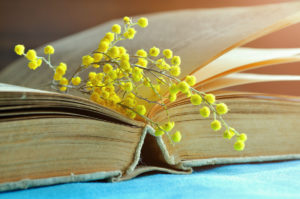
When my husband and I began dating almost 14 years ago, he gave me a copy of Kahlil Gibran’s volume entitled Tears and Laughter. A gesture that I often refer to as “the moment I knew I wanted to marry him” – a symbol of our shared experience of life. I resonate with many of Gibran’s poems and prose pieces but I was especially moved by what Gibran wrote in the Introduction to Tears and Laughter:
I would not exchange the laughter of my heart for the fortunes of the multitudes; nor would I be content with converting my tears, invited by my agonized self, into calm. It is my fervent hope that my whole life on this earth will ever be tears and laughter.
Tears that purify my heart and reveal to me the secret of life and its mystery,
Laughter that brings me closer to my fellow men;
Tears with which I join the broken-hearted,
Laughter that symbolizes joy over my very existence…
In my more deluded moments I think all the painful and otherwise difficult experiences in life are behind me. Maybe I have done enough healing and it will just be smooth sailing from now on? What I fail to recognize in these moments is that while I may have healed or recovered from events of the past, I have limited control over what lies ahead of me. The reality is there will be more loss, more difficulty, more pain – more tears.
Laughter, happiness and other positive states are desirable and a vital part to our well-being but not useful in perpetuity. In order to have a genuine connection to self and others, we need opportunities to evaluate life’s meaning and purpose. As Gibran says, “Tears that purify my heart and reveal to me the secret of life and its mystery.” Additionally, I find that my suffering allows me to attune to others’ suffering more authentically. I can recognize someone else’s broken heart because my heart has been broken in more general and specific ways. We see each other more purely through the vulnerability created in the path of brokenness. And, ultimately, what is more powerful than the experience of being seen?
